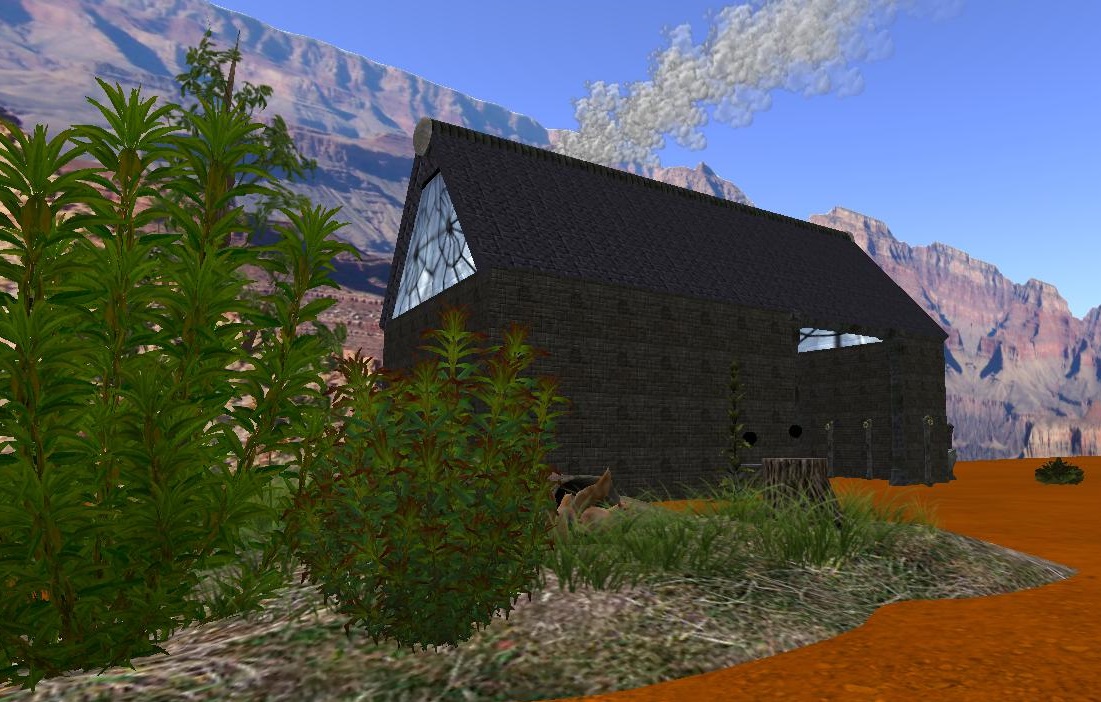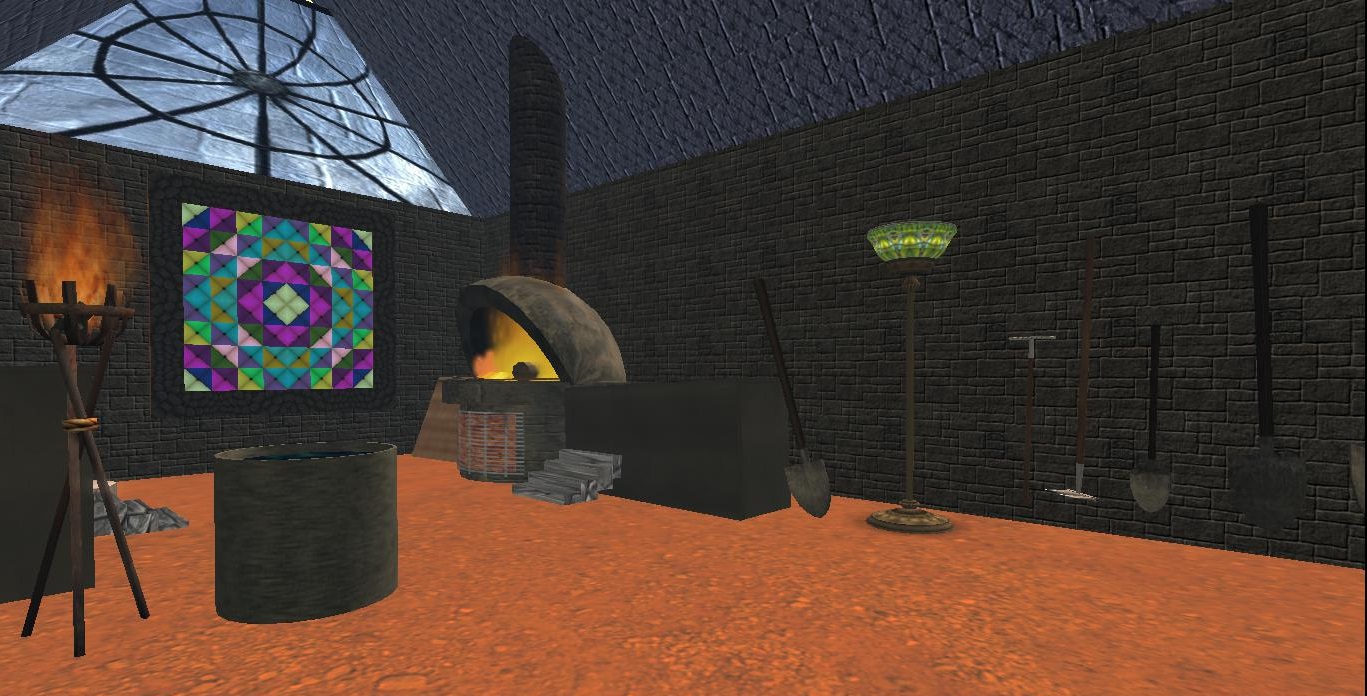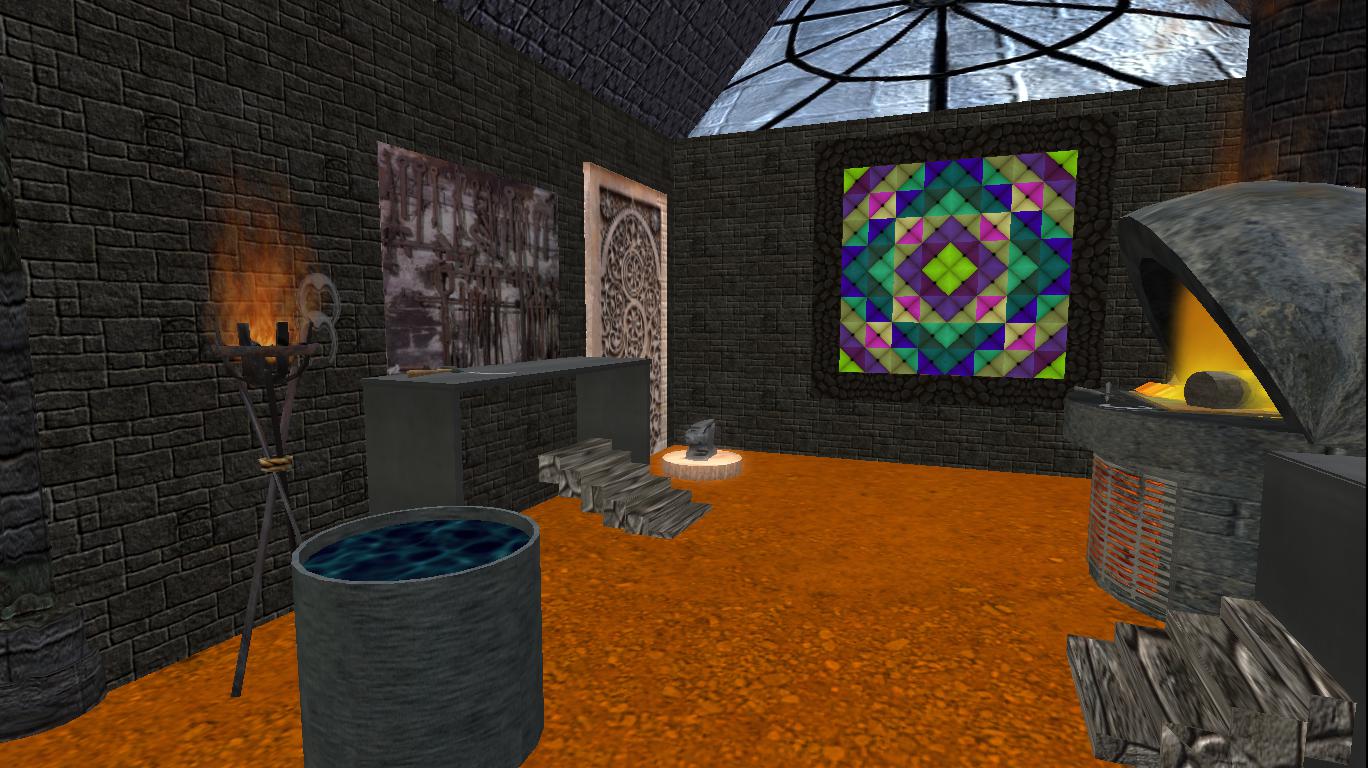Ore Else
Purgatory Gulch's local blacksmithy belongs to Baldy and Ranger.
Ranger says the business name is a particularly crass pun in that Grundel language.
Baldy guffaws. Then he changes the subject.
Someone approaching can tell how the work is going by listening to the songs.
Ranch hands who work together in duos tend to sing. They circle the herd at night, one hand sings out the first lyric of a song, the other hand sings back the next lyric, and they keep on going that way as they move along. Songs are never fancy in their timing because that might not carry well. Lots of 'em are either bawdy or sad.
In times when the current project is coming along well, Baldy and Ranger sing rancher songs. They make up the words sometimes. They might both sing the chorus together when hammering something on the anvil.
Architecture
This is a stone building in about the boxy shape of a shed or barn. It can fit two horses inside without putting them too close to the forge or workbench. Two pole-style hitching rings are built into the western end of the interior, near the wide open entrance. A third hitching ring on a post is available just outside the entrance, and additional animals could be parked on the west side of the exterior where they will have access to hay and a water trough from their hitching post.
The top half or so of the building is the A-frame black roof. On the narrow ends, most of the space between the roof and the wall is taken up by a giant triangular window, made of frosted or smoked glass put together with metal seams in a spiderweb pattern. The eastern wall also has a square window in its lower area, made of more brightly colored stained glass in a kaleidoscopic pattern.
That's an unsettling window, actually, to those who are not accustomed to it. Look away for too long, and the kaleidoscope pattern changes.
A chimney comes through the roof on its southern slope. Smoke is usually pouring out of it.
Contents & Furnishings
Inside the smithy, finished products hang from pegs on the south wall. A visitor might find human-sized shovels and rakes, similar things sized for folks of the dwarven or halfling persuasion, plus one-off or commissioned products on the wall such as an iron floor lamp with an art-deco stained glass bowl at the top for Ghost Harrell at Larchblossom Ranch or a wrought iron fire brazier for Dorna Gritgobbler's birthday at Chiamina Farm. The forge itself is usually lit. It is made of light-colored stone and is rounded, bricks on the lower section and a smooth single piece forming the shell-like hood. It has a black chimney rising up out of sight, going through the dull black roof. A closed grate curves along the front of the lower section, allowing air to feed into the base of the forge. On the wide stone lip of the forge's hearth, things that need a quick hammering before they go back into the heat can be worked instead of taking them over to the anvil. Between the hearth and the east wall, split firewood is neatly stacked for quick fuel additions. Brick steps form a riser at the end of the worktable closest to the forge. The east wall from the viewer has two windows. The square lower window gives the impression that the kaleidoscope could turn, moving the pieces and changing the colors, at any given second. In the northeast building corner left of the square window, an anvil rests atop a round wood stump cut only a few inches above the red earth. The stump and the anvil might be glowing very slightly -- not the red glow of heat, but the white light of something unworldly or supernatural. A doorway-sized ornate stone carving in the wall might be ventilation (except that it was not visible from the outside) or a sound baffle. Or it might simply be art for art's sake. It is extremely clean, peach-colored stone, with no dust or cobwebs or anything on any of the many carved surfaces. Closer to the entrance along the north wall is a simple workbench with a rack of tools hanging on the wall above it. Most of the tools are completely made of the same unpolished metal. The tools quickly identifiable include pliers, pincers, chisels, wrenches, a ball-peen hammer, tongs, and the two blacksmith hammers more often to be found on the forge's hearth. Some spaces are usually open where tools have been removed from their assigned hooks. The workbench is where things get worked once they have mostly cooled, although char marks on the workbench surface prove that this is more of a guideline than a strict rule. Stones or maybe gray bricks have been assembled into a set of stairs under the far end of the workbench so that a much shorter person does not have to dig out a stepstool in order to work comfortably. Finished horseshoes, ready for application when a customer arrives, hang on the wall nearby. Sometimes two oatman hats hang there as well, when the proprietors are hard at work. Sometimes a pair of leather aprons hang there instead, when the forge is dark and the proprietors are away.
Type
Craftsman, Blacksmith / Smithy
Parent Location
Owner
Related Plots





Comments